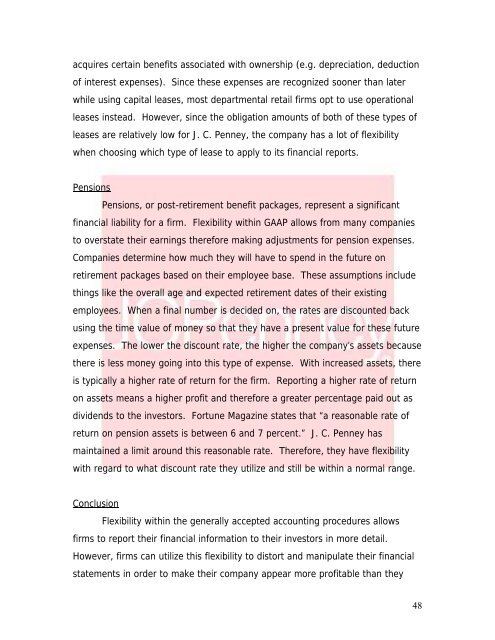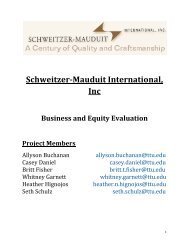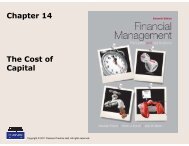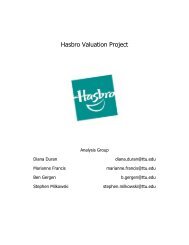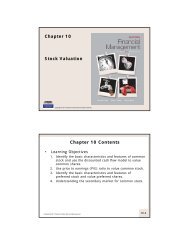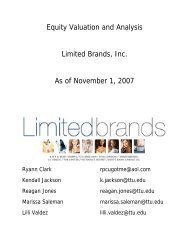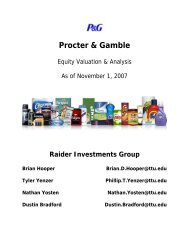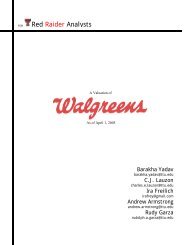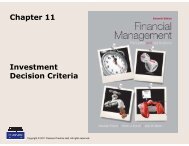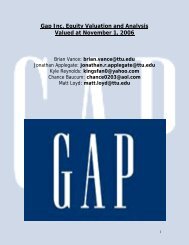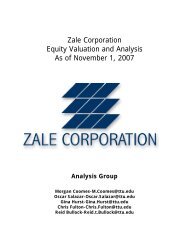J. C. Penney Company, Inc. Equity Valuation and Analysis As of ...
J. C. Penney Company, Inc. Equity Valuation and Analysis As of ...
J. C. Penney Company, Inc. Equity Valuation and Analysis As of ...
You also want an ePaper? Increase the reach of your titles
YUMPU automatically turns print PDFs into web optimized ePapers that Google loves.
acquires certain benefits associated with ownership (e.g. depreciation, deduction<strong>of</strong> interest expenses). Since these expenses are recognized sooner than laterwhile using capital leases, most departmental retail firms opt to use operationalleases instead. However, since the obligation amounts <strong>of</strong> both <strong>of</strong> these types <strong>of</strong>leases are relatively low for J. C. <strong>Penney</strong>, the company has a lot <strong>of</strong> flexibilitywhen choosing which type <strong>of</strong> lease to apply to its financial reports.PensionsPensions, or post-retirement benefit packages, represent a significantfinancial liability for a firm. Flexibility within GAAP allows from many companiesto overstate their earnings therefore making adjustments for pension expenses.Companies determine how much they will have to spend in the future onretirement packages based on their employee base. These assumptions includethings like the overall age <strong>and</strong> expected retirement dates <strong>of</strong> their existingemployees. When a final number is decided on, the rates are discounted backusing the time value <strong>of</strong> money so that they have a present value for these futureexpenses. The lower the discount rate, the higher the company’s assets becausethere is less money going into this type <strong>of</strong> expense. With increased assets, thereis typically a higher rate <strong>of</strong> return for the firm. Reporting a higher rate <strong>of</strong> returnon assets means a higher pr<strong>of</strong>it <strong>and</strong> therefore a greater percentage paid out asdividends to the investors. Fortune Magazine states that “a reasonable rate <strong>of</strong>return on pension assets is between 6 <strong>and</strong> 7 percent.” J. C. <strong>Penney</strong> hasmaintained a limit around this reasonable rate. Therefore, they have flexibilitywith regard to what discount rate they utilize <strong>and</strong> still be within a normal range.ConclusionFlexibility within the generally accepted accounting procedures allowsfirms to report their financial information to their investors in more detail.However, firms can utilize this flexibility to distort <strong>and</strong> manipulate their financialstatements in order to make their company appear more pr<strong>of</strong>itable than they48


